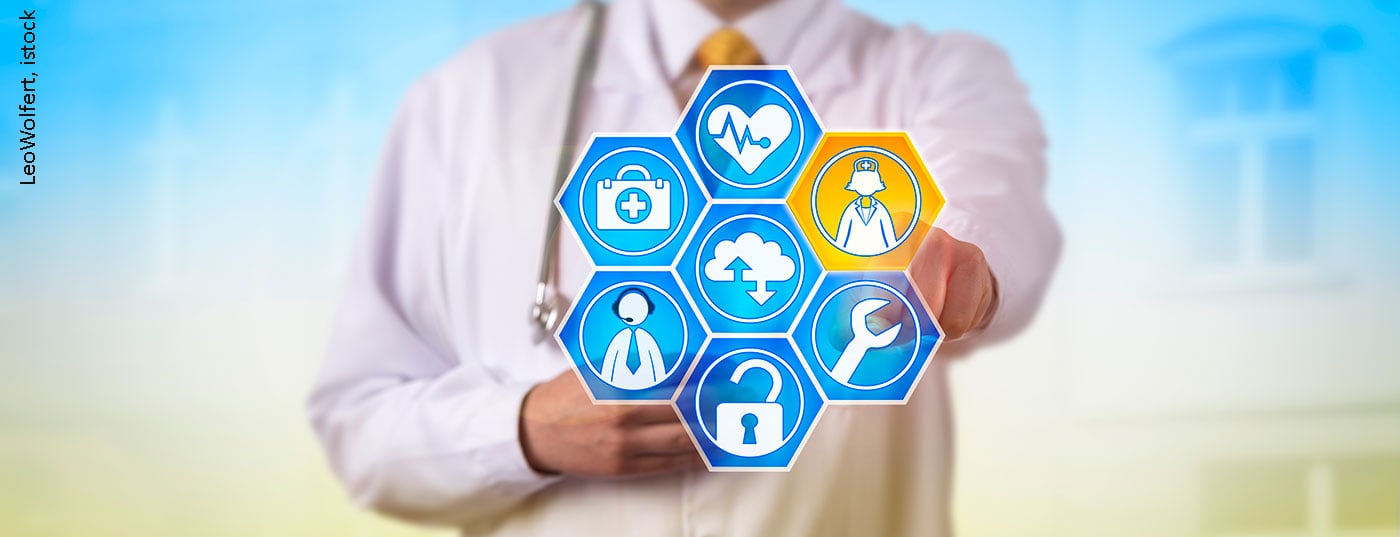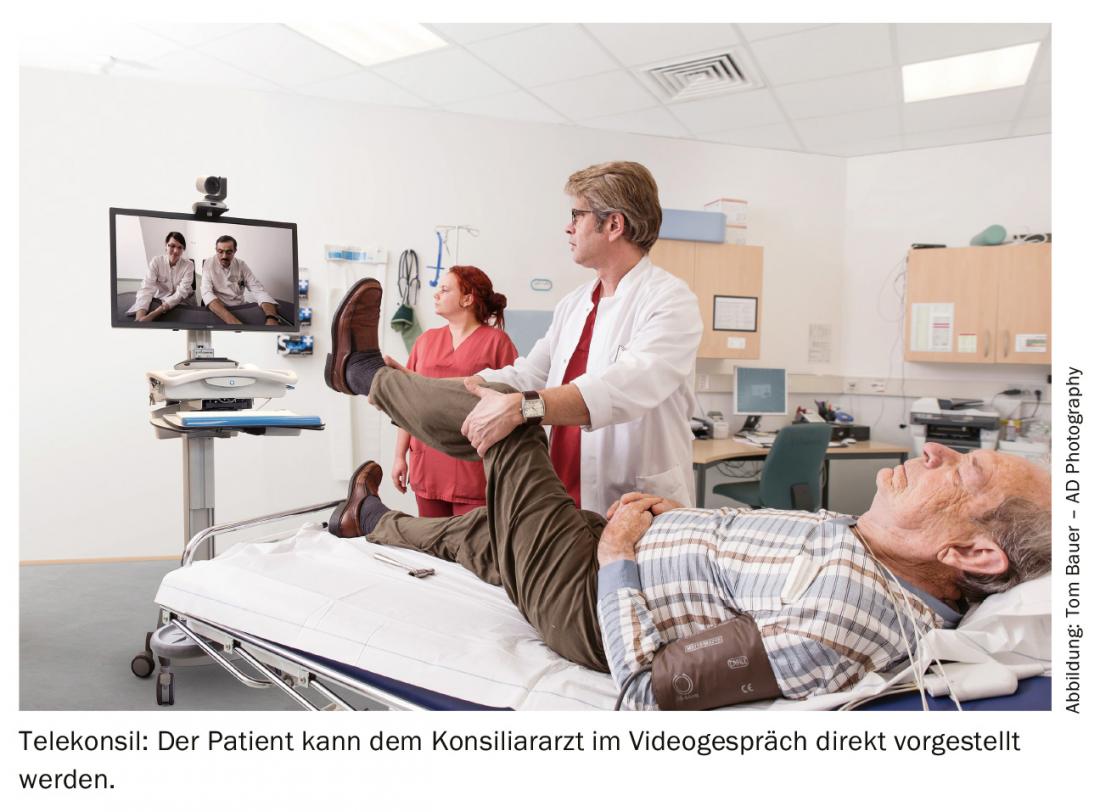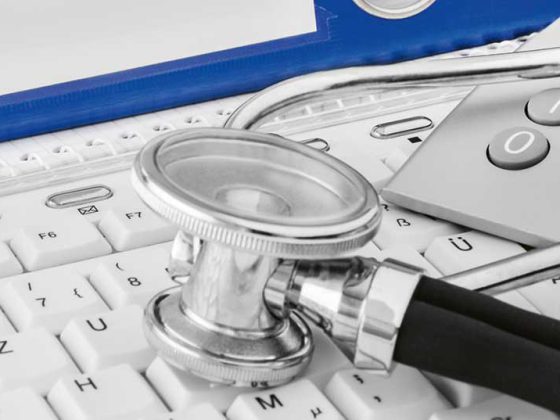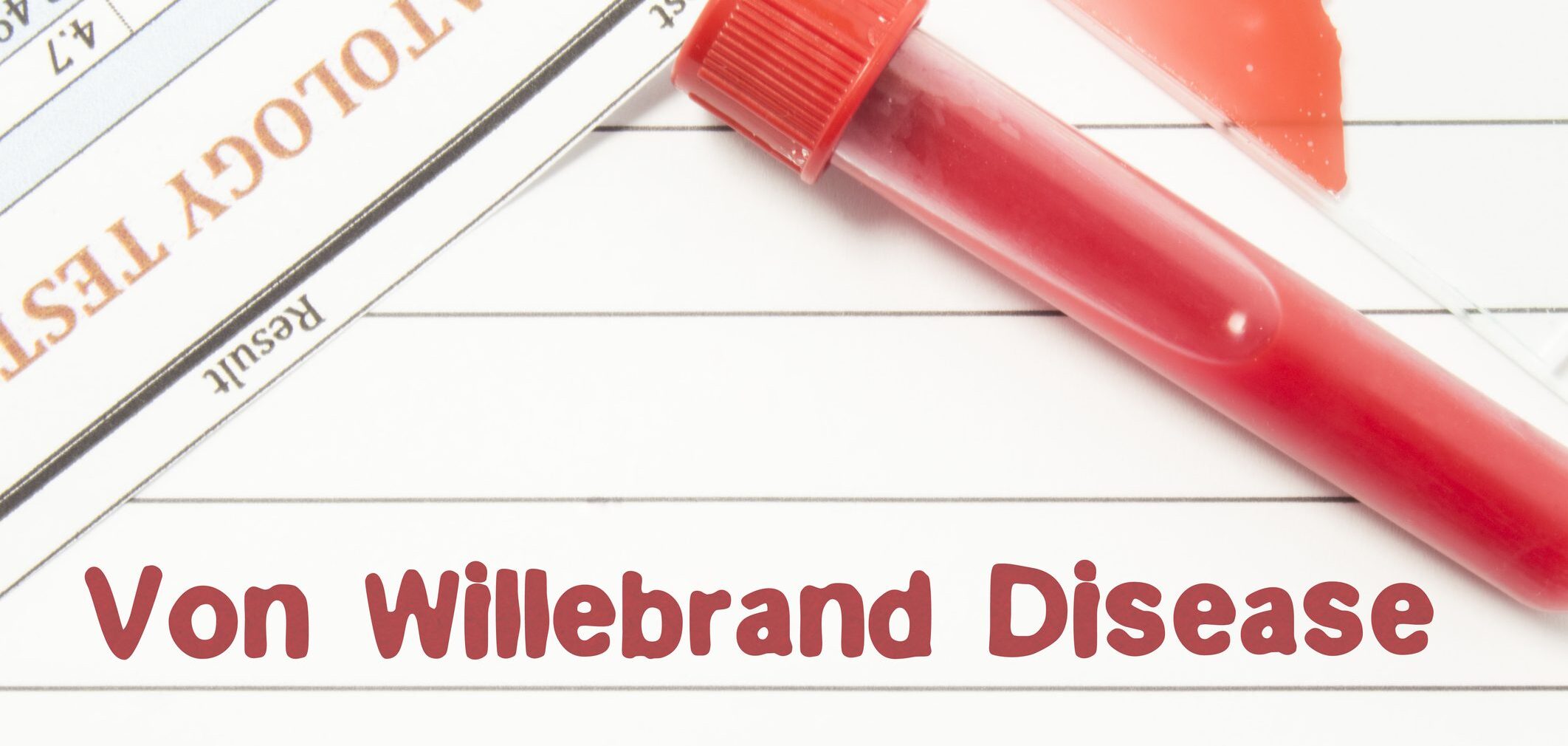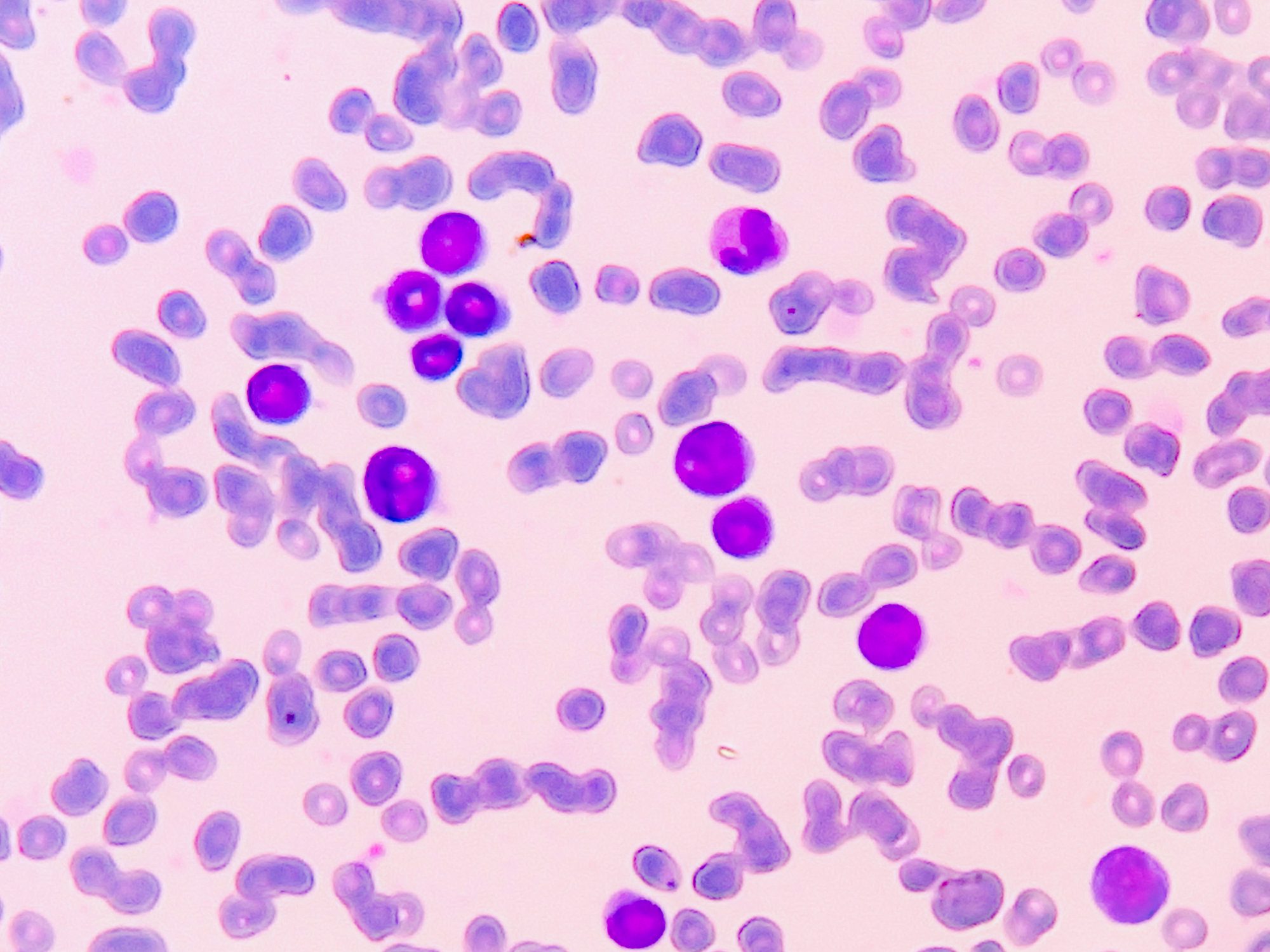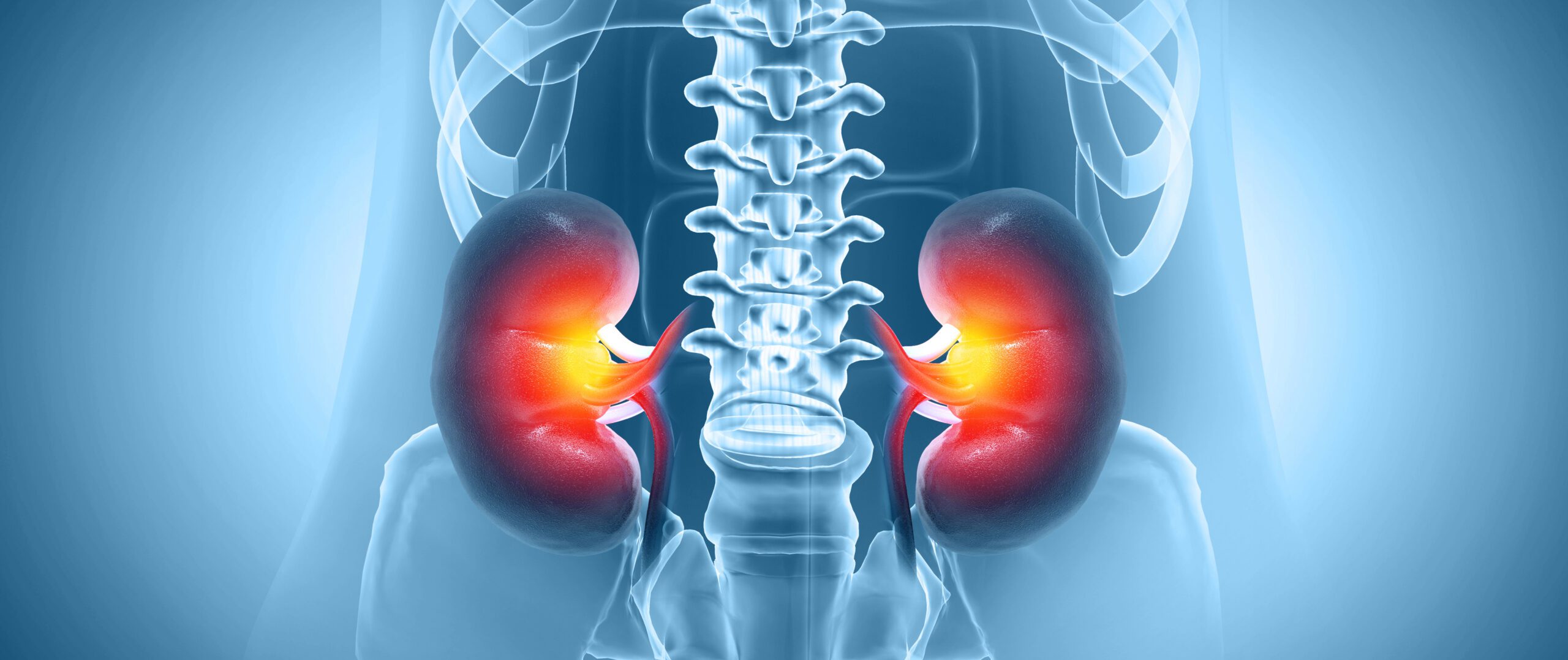Telemedicine is the ability to share medical information across facilities and provide care to patients remotely. As early as 1980, NASA relied on telemedical monitoring and care for its astronauts in space – transmitting ECG, oxygen saturation and ultrasound images in real time over several hundred kilometers from space to the control center. What was state-of-the-art back then can be used by any doctor today.
For use in medical practice, telemedicine takes on tasks completely different from those in space, in addition to the exchange of information. It reduces the burden on staff, lowers healthcare costs, reduces unnecessary travel time, and increases patient health literacy.
Their areas of application are diverse and can be divided into “doctor to doctor” and “doctor to patient” applications. Timed synchronously or asynchronously, telemedicine systems serve to improve processes and doctor-patient communication. Classic applications include televisiting, teleconsultation, and telemonitoring of people with chronic conditions. Meanwhile, digital tools for patient communication, including online appointment management, video consultation, online coaching and health apps, have also proven useful.
While all these applications are explicitly desired by patients, they are not yet in use in 80% of Swiss medical practices [1]. For many patients, telemedicine services are now a decisive decision criterion when choosing a physician [2].
Online appointment management – controlling patients and processes
Doctor appointments are usually made by phone or in person. Often this way of making an appointment requires some patience. It depends on two main factors: the open time slots that need to be matched via the phone call, and the general accessibility of the practice. Both factors make it difficult to schedule appointments, on both the patient and practice sides. Due to the high volume of calls, an MPA quickly becomes a switchboard operator and quite often has to answer and manage frustrated patient calls. All this costs a doctor’s office a lot of time and money. Additionally, efficient scheduling is negatively impacted by unpunctual or no-show patients.
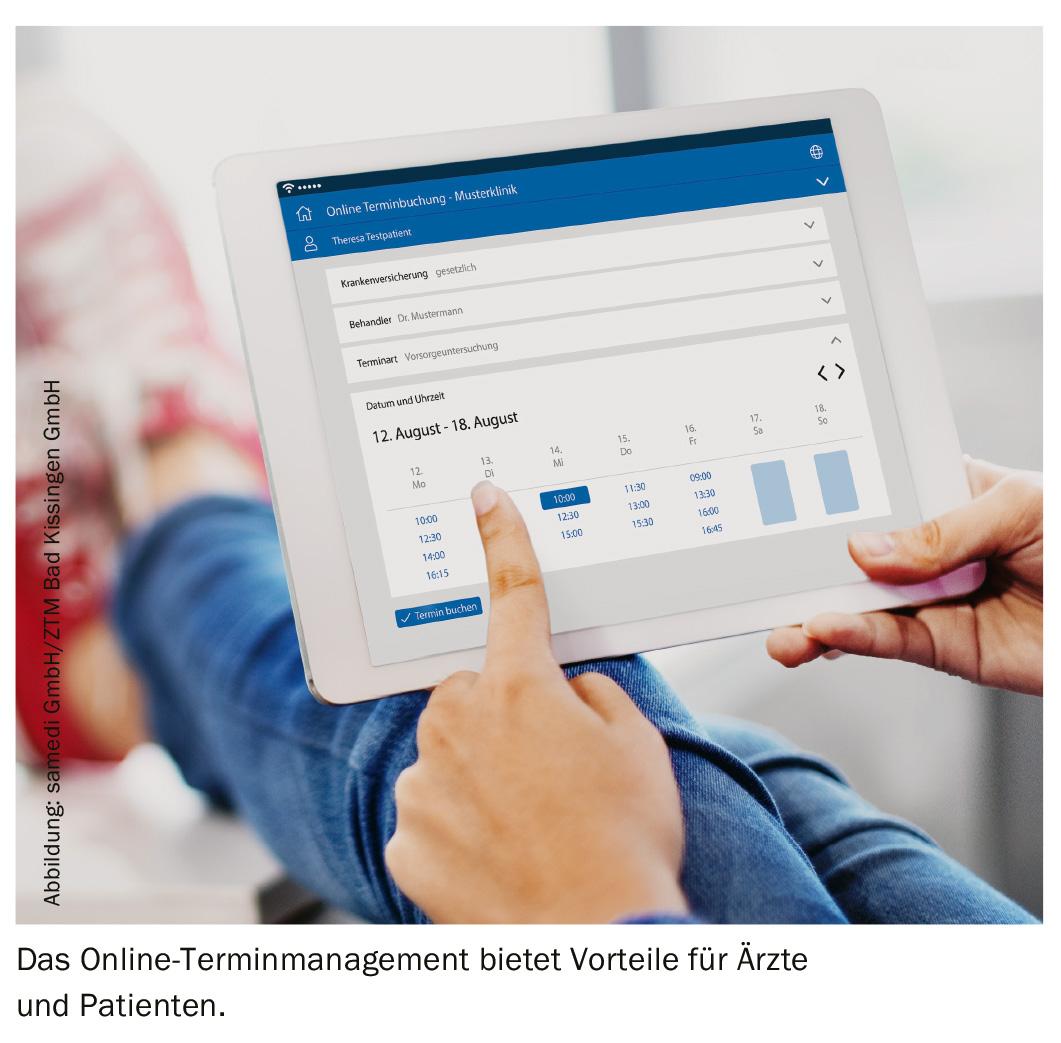
One telemedicine solution that can positively counteract this problem is a so-called online appointment management system (OTMS). Patients can use it to book their appointments online so that they automatically fit into the practice’s scheduling – saving a lot of phone calls. With the help of an online calendar, which gives an overview of all free time slots given by the practice, the patient can choose his or her own desired appointment. The process is simple and saves time not only for patients, but also for the practice staff. An MPA can reallocate one-third of her work time by implementing an OTMS [2]. The measured reduction in telephone calls is already in the clear double-digit range in some cases (up to 25%) just a few weeks after introduction [3]. Thanks to appointment reminders such as email/SMS, no-show rates can be reduced by up to 40% [4].
Nearly 70% of the Swiss feel it is important to be able to make a doctor’s appointment online [5]. This is possible in only 10% of Swiss medical practices [6]. A clear difference between patient wishes and reality.
Televisite in tablet format
What happens if you can’t get to the doctor yourself due to low mobility? The doctor comes for a house call! This is costly, but not always necessary. In the digital form of the home visit, namely for the televisit, the doctor comes in tablet format with the help of a telemedicine assistant (TMA).
The TMA, an MPA with an additional qualification to perform non-physician activities, undertakes home visits in the form of televisits on behalf of the physician. On site, she has a tablet and almost everything that a normal practice also has to offer. However, the “doctor’s case” of the TMA looks somewhat different: It contains special measuring devices that look very similar to an ECG or otoscope from the doctor’s office, but are different in function. They measure the patient’s data and transmit it in digital form directly to the doctor’s office. The doctor can be connected via video for a joint discussion or to clarify the further procedure. A clever way of networking – not only between doctor/physician and patient, but also between medical professionals and various facilities, e.g. nursing homes, pharmacies or community centers. It is an efficient approach because the TMA model saves both physician and patient unnecessary travel and journey times. Rural regions in particular are seeing a sharp decline in medical care. The TMA model makes it possible to compensate for this decline without placing an additional burden on physicians.
Exchange between experts
In what is known as teleconsultation, doctors exchange information with each other and also with other medical experts. The specialist can be connected directly to the treatment via video and evaluates the case on the basis of digitally transmitted case data. One example is the dermatological teleconsil. To clarify a patient’s symptoms, a physician can consult a dermatological expert via teleconsil. A separate appointment with the specialist, in this case the dermatologist, is not necessary. Symptoms, findings, wound documentation or images can be transmitted digitally and evaluated by the dermatologist. The patient can also be presented directly to the consultant in the video conversation. The teleconsil avoids appointments and thus relieves the physician. In addition, symptoms or abnormalities can be clarified at an early stage, without long waiting times for additional specialist appointments. Teleconsultation is not only useful in early diagnosis, but also in post-operative follow-up, e.g. after an operation in a specialist clinic. Telemedicine follow-up during a teleconsult lasts an average of 11 minutes with a patient satisfaction rate of 95%. In addition, travel times of one to over three hours can be saved in over 85% of cases [7]. In addition to dermatology, teleconsultations have already proven useful in neurology (e.g. epilepsy, stroke, multiple sclerosis) and cardiology (e.g. heart failure).
Therapy measures “ver-App-reichen
In some cases and conditions, patient support for self-therapy management is beneficial in addition to physician appointments. Here, patient apps are a helpful medical platform for exchange between patients and medical professionals. For example, after a musculoskeletal injury, the doctor and physical therapist can assign various exercises to the patient via the app. The patient can perform the exercises independently using a weekly plan created with the therapist and watch explanatory videos about them. Afterwards, he evaluates himself and receives clues about his condition – and can share them again with the therapist. This improves both therapy management and the patient’s health literacy. Based on the information and data collected, aspects of care can be optimized for the patient. The doctor has little to do with “app therapy.” If necessary, he provides advice and can guide the therapy in the appropriate direction, supported by the information from the app.
One small step for technology, one big step for the medical practice?
Telemedicine offers new opportunities for interaction between physicians and patients and relieves the burden on healthcare professionals in many areas of their daily work. Concerns that the solutions are too complex and costly are unfounded, as most systems are already well established in other areas (e.g., appointment bookings). There are suitable solutions on the market specifically for the processes in practices or hospitals and the data protection requirements. With the introduction of the electronic patient dossier (EPD) later this year, Switzerland is also laying another important foundation for the simple and secure exchange of health data for telemedicine treatments in the future.
For patients, the digital world with the Internet, mobile communications, etc. has long been part of everyday life. It provides a lot of information (varying in quality) that can lead to questioning the information or performance of physicians. Therefore, there is a legitimate concern that this will create additional distance between the physician and the patient. But telehealth solutions enable just the potential to provide patients with closer care, improve compliance, and provide them with important, relevant information at the right time.
Digitization has only just begun in the healthcare sector. The biggest obstacle is the lack of knowledge about the possibilities. A lot of new things are emerging here: the Inselspital Bern, for example, has advertised an endowed professorship in Telenot Emergency Medicine financed by the TCS [8]. Many telehealth providers offer training and educate staff on the use of their products. ASDA and the ZTM offer tele-learning: The free eLearning portal www.ztm.de/kompendium recently went online.
Literature:
- Swiss e-Health Barometer. 2019 health professional survey report; https://cockpit.gfsbern.ch/de/cockpit/ehealth-gesundheitsfachpersonen-2019
- Deutsche Apotheker- und Ärztebank eG. Digitization in Practice 2018; www.apobank.de/wissen-news/kompetenzzentrum-apohealth/die-digitale-praxis; accessed 02/03/2020.
- Rashid A, Prinz S: Online appointment management: Many potentials for medical practices. Deutsches Ärzteblatt ePaper PRAXIS 2015; 2: 112(15).
- Zhao P: Web-Based Medical Appointment Systems: A Systematic Review. Journal of Medical Internet Reserarch 2017; 19(4).
- Swiss e-Health Barometer. 2019 Population Survey Report; https://cockpit.gfsbern.ch/de/cockpit/ehealth-bevoelkerung-2019; accessed 01/29/2020.
- Pahud O: Physicians in primary care – situation in Switzerland and in international comparison. Analysis of the 2019 International Health Policy (IHP) Survey by the U.S.-based Commonwealth Fund Foundation on behalf of the Swiss Federal Office of Public Health (SFOPH). Swiss Health Observatory (OBSAN) 2019; Report 15.
- Beule AG: Telemedical methods in otolaryngology. Laryngo-Rhino-Otology 98: Georg Thieme Verlag KG Stuttgart, New York 2019; 129-151. https://doi.org/10.1055/a-0785-0252
- www.unibe.ch/aktuell/medien/media_relations/medienmitteilungen/2019/medienmitteilungen_2019/neue_stiftungsprofessur_fuer_telenotfallmedizin/index_ger.html
InFo PAIN & GERIATURE 2020; 2(1): 38-40.
InFo ONCOLOGY & HEMATOLOGY 2020; 8(5): 38-40.


